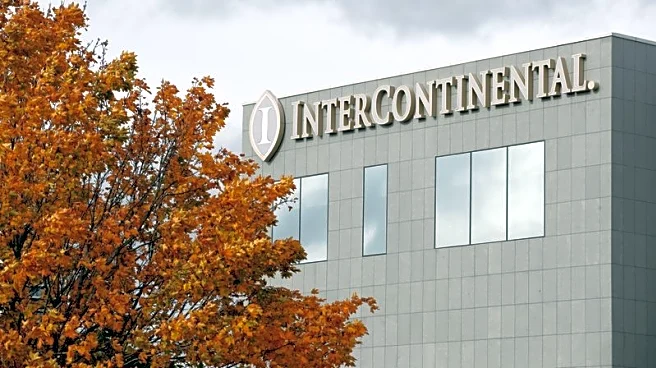What's Happening?
The construction industry experienced a decline in project stress for the third consecutive month, according to the latest data from ConstructConnect. The Project Stress Index, which measures delays and abandonments in construction projects, decreased
by 0.6% from August to September. This decline follows a period of volatility earlier in the year, bringing stress levels to just 4% above the 2021 baseline. Despite improvements in bid date delays and abandonments, there was a significant increase in projects placed on hold, rising by 19.5% after record lows earlier in the year. Private construction showed resilience, with private project abandonments falling 8% year over year and on-hold activity dropping 54.5% compared to the same period in 2024. However, public sector abandonments climbed 16.7% year over year in September, attributed to federal funding cuts affecting education and municipal construction.
Why It's Important?
The decline in construction stress is significant as it indicates a potential stabilization in the industry following a period of economic and labor uncertainty. The resilience in private construction suggests that the sector is adapting to changes, such as tariffs introduced by President Trump, which initially caused disruptions. However, the increase in public sector abandonments highlights ongoing challenges due to federal funding cuts. These cuts could have broader implications for public infrastructure projects, potentially affecting job creation and economic growth. The construction industry is also facing challenges from labor shortages and high material costs, which could impact project viability and slow down activity until more favorable conditions emerge.
What's Next?
The construction industry may continue to face challenges as federal funding issues persist, particularly with the recent government shutdown not yet reflected in the data. Contractors are likely to experience further delays and cancellations due to tariffs and labor shortages. The industry will need to navigate these challenges while seeking opportunities for stabilization and growth. Stakeholders, including government agencies and construction firms, may need to explore alternative funding sources or policy adjustments to mitigate the impact of these disruptions.
Beyond the Headlines
The ongoing challenges in the construction industry could lead to long-term shifts in how projects are funded and managed. The reliance on federal funding for public projects may prompt discussions on alternative financing models, such as public-private partnerships. Additionally, the labor shortages and high material costs could drive innovation in construction practices, including increased automation and the use of sustainable materials. These changes could reshape the industry, influencing future project planning and execution.














